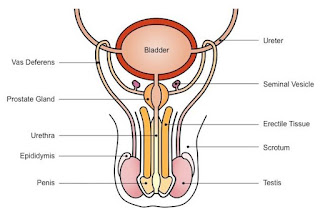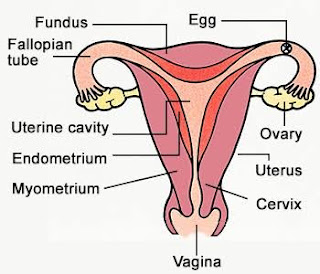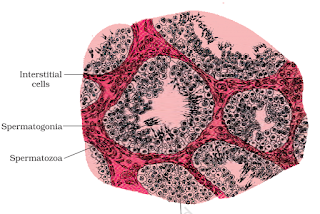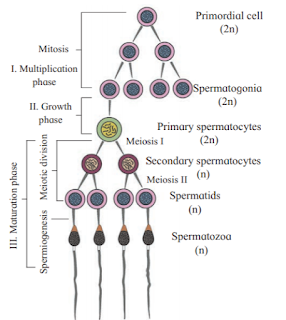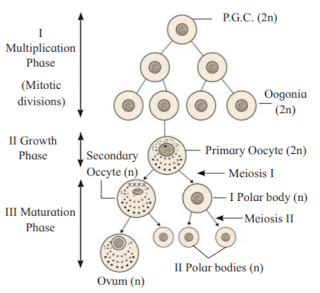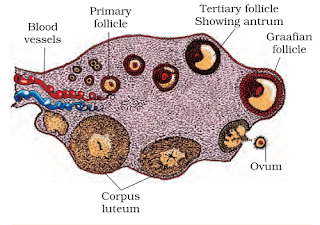NCERT Solutions Class 12 Biology Chapter 3 Human Reproduction free PDF
NCERT Solutions Class 12 Biology Chapter 3 Human Reproduction free PDF
Students of NCERT need to build a smart preparation strategy that must include the task of practicing textbook Question. This NCERT solutions for class 12 Biology will improve your speed and accuracy.
So, to enhance your chances of exams the this solutions will help you, here we have compiled the all the questions of CBSE class 12 biology chapter 3 human reproduction textbook Solutions.
In this article. You can get all the Questions and answers of Class 12 Biology chapter 3 Human Reproduction along-with Simple Answers of the each questions. ybstudy.com NCERT Solution class 12 Biology textbook solutions is of high class and very high quality; it will benefit all our students of class XII very much.
This solutions are 100% accurate and updated study material for all as per the NCERT Textbook.
Important points to remember :
- Humans are sexually reproducing and viviparous. The male reproductive system is composed of a pair of testes, the male sex accessory ducts and the accessory glands and external genitalia. Each testis has about 250 compartments called testicular lobules, and each lobule contains one to three highly coiled seminiferous tubules.
- The female reproductive system consists of a pair of ovaries, a pair of oviducts, a uterus, a vagina, external genitalia, and a pair of mammary glands. The ovaries produce the female gamete (ovum) and some steroid hormones (ovarian hormones).
- The uterus has three layers namely perimetrium, myometrium and endometrium. The female external genitalia includes mons pubis, labia majora, labia minora, hymen and clitoris. The mammary glands are one of the female secondary sexual characteristics.
- Spermatogenesis results in the formation of sperms that are transported by the male sex accessory ducts. A normal human sperm is composed of a head, neck, a middle piece and tail.
- The process of formation of mature female gametes is called oogenesis.
- The reproductive cycle of female primates is called menstrual cycle. Menstrual cycle starts only after attaining sexual maturation (puberty).
- The presence of X or Y chromosome in the sperm determines the sex of the embryo. The zygote undergoes repeated mitotic division to form a blastocyst, which is implanted in the uterus resulting in pregnancy. After nine months of pregnancy, the fully developed foetus is ready for delivery. The process of childbirth is called parturition.
- Mammary glands differentiate during pregnancy and secrete milk after child-birth. The new-born baby is fed milk by the mother (lactation) during the initial few months of growth.
1. Fill in the blanks:
a) Humans reproduce __________ (asexually/sexually)
Answer : Humans reproduce sexually.
b) Humans are _____________ (oviparous, viviparous, ovoviviparous)
Answer : Humans are viviparous.
c) Fertilisation is ________ in humans (external/internal)
Answer : Fertilisation is internal in humans
d) Male and female gametes are_________ (diploid/haploid)
Answer: Male and female gametes are haploid
e) Zygote is _______(diploid/haploid)
Answer : Zygote is diploid
f) The process of release of ovum from a mature follicle is called ________
Answer : The process of release of ovum from a mature follicle is called ovulation
g) Ovulation is induced by a hormone called _________
Aanswer : Ovulation is induced by a hormone called luteinizing hormone (LH)
h) The fusion of male and female gametes is called ________
Answer : The fusion of male and female gametes is called fertilization
i) Fertilisation takes place in _______
Answer : Fertilisation takes place in ampulla of oviduct
j) Zygote divides to form ______which is implanted in uterus.
Answer : Zygote divides to form blastocyst which is implanted in uterus
k) The structure which provides vascular connection between foetus and uterus is called _______
Answer : The structure which provides vascular connection between foetus and uterus is called placenta
2. Draw a labelled diagram of male reproductive system.
Answer :
The male reproductive system is located in the pelvis region. It includes a pair of testes alongwith accessory ducts, glands and the external genitalia.
3. Draw a labelled diagram of female reproductive system.
Answer :
The female reproductive system consists of a pair of ovaries alongwith a pair of oviducts, uterus, cervix, vagina and the external genitalia located in
pelvic region These parts of the system alongwith a pair of the mammary glands are integrated structurally and functionally to support the processes of ovulation, fertilisation, pregnancy, birth and child care
4. Write two major functions each of testis and ovary.
Answer : Testis functions : Testes serve as the site of spermatogenesis for the production of sperm. It also produce hormones, particularly testosterone the primary male sex hormone. Sperm are produced in the seminiferous tubules of the testes.
The two main fuctions of ovaries in the body are They produce oocytes (eggs) by the process oogenesis for fertilisation and they produce the reproductive hormones, oestrogen and progesterone.
5. Describe the structure of a seminiferous tubule.
Answer :
Testis has about 250 compartments called testicular lobules. Each lobule contains one to three highly coiled seminiferous tubules in which sperms are produced. Each seminiferous tubule is lined on its inside by two types
of cells called male germ cells also called spermatogonia and Sertoli cells.
The male germ cells undergo meiotic divisions finally leading to sperm formation, while Sertoli cells provide nutrition to the germ cells. The regions outside the seminiferous tubules called interstitial spaces, contain small blood vessels and interstitial cells or Leydig cells. Leydig cells synthesise and secrete testicular hormones called androgens
6. What is spermatogenesis? Briefly describe the process of spermatogenesis.
Answer : The process of formation of the male gamete (sperm) or spermatozoa from the germinal epithelium of testis is called spermatogenesis.
At the onset of puberty, the
hypothalamus begins secretion of gonadotropin releasing hormone (GnRH). It initiates the significant increase in the secretion of follicle stimulating hormone (FSH) which induces spermatogenesis. Each seminiferous tubules is lined by a single layer of cuboidal epithelial cells called germinal epithelium. The cells of germinal epithelium undergo spermatogenesis to produce sperms. Process of spermatogenesis
The spermatogonia (sing. spermatogonium) present on the inside wall of seminiferous tubules multiply by mitotic division and
increase in numbers. Each spermatogonium is diploid and contains 46
chromosomes. Some of the spermatogonia called primary spermatocytes periodically undergo meiosis. A primary spermatocyte
completes the first meiotic division (reduction division) leading to formation of two equal, haploid cells called secondary spermatocytes, which have only 23 chromosomes each. The secondary spermatocytes undergo the second meiotic
division to produce four equal, haploid
Spermatid.
The spermatids are transformed into
spermatozoa (sperms) by the process called
spermiogenesis. After spermiogenesis,
sperm heads become embedded in the
Sertoli cells, and are finally released from
the seminiferous tubules by the process
called spermiation.
7. Name the hormones involved in regulation of spermatogenesis.
Answer : In spermatogenesis diffrents harmones are involved like
- Spermatogenesis starts at the age ofpuberty due to significant increase in the secretion of gonadotropin releasing hormone (GnRH).
- LH acts at the Leydig cells and stimulates synthesis and secretion of androgens.
- Androgens, in turn, stimulate the process of spermatogenesis.
- FSH acts on the Sertoli cells and stimulates
8. Define spermiogenesis and spermiation.
Answer : The process of transformed spermatids into spermatozoa (sperms) is called as spermiogenesis.
The process of released of sperm from seminiferous tubules is called as spermiation.
9. Draw a labelled diagram of sperm.
Answer :
10. What are the major components of seminal plasma?
Answer : Seminal plasma consists of various biochemical components, such as glucose, cholesterol, proteins, metabolites, intracellular and antioxidant enzymes, mineral elements which are important for sperm function and metabolism. The seminal plasma is rich in fructose, calcium, ascorbic acid, and certain enzymes. It provides nourishment and protection to sperms.
11. What are the major functions of male accessory ducts and glands?
Answer : Sperms released from the seminiferous tubules, are transported by the accessory ducts. Secretions of epididymis, vas deferens, seminal vesicle and prostate are essential for maturation and motility of sperms. The seminal
plasma along with the sperms constitute the semen. The functions of male sex accessory ducts and glands are maintained by the testicular hormones (androgens)
12. What is oogenesis? Give a brief account of oogenesis.
Answer : It is process of formation of the haploid female gamete i.e. egg or ovum from the diploid germinal epithelium. It involves the process of meiosis (and mitosis).
Oogenesis is initiated during the embryonic development stage when a couple of million gamete mother cells (oogonia) are formed within each fetal ovary; no more oogonia
are formed and added after birth. These cells start division and enter into prophase-I of the meiotic division and get temporarily arrested at that stage, called primary oocytes. Each primary oocyte then gets surrounded by a layer of granulosa cells and is called the primary follicle.
The primary follicles get surrounded by more layers ofgranulosa cells and a new theca and are called secondary follicles.
The secondary follicle soon transforms into a tertiary follicle which is characterised by a fluid filled cavity called antrum. The theca layer is organised into an inner theca interna and an outer theca externa.
primary oocyte within the tertiary follicle grows in size and completes its first meiotic
division. It is an unequal division resulting in the formation of a large haploid secondary oocyte and a tiny first polar body. The secondary oocyte retains bulk of the nutrient rich cytoplasm of the primary
oocyte.
13. Draw a labelled diagram of a section through ovary.
Answer :
14. Draw a labelled diagram of a Graafian follicle?
Answer :
15. Name the functions of the following:
a) Corpus luteum
Answer : The primary purpose of the corpus luteum is to pulse out hormones, including progesterone. Progesterone is required for a viable pregnancy to occur and to continue. Progesterone helps the uterine lining, known as the endometrium, to thicken and become spongy.
b) Endometrium
Answer : The endometrium is the innermost lining layer of the uterus, and functions to prevent adhesions between the opposed walls of the myometrium, thereby maintaining the patency of the uterine cavity.
c) Acrosome
Answer : Acrosome contains digestive protease enzymes like including hyaluronidase and acrosin. These enzymes break down the outer membrane of the ovum, called the zona pellucida, allowing the haploid nucleus in the sperm cell to join with the haploid nucleus in the ovum.
d) Sperm tail
Answer : sperm tail is also called as flagellum is a slender lash-like appendage of the cell body. By beating their tails, sperm cells swim to the female reproductive cell (oocyte) and to fertilise it.
e) Fimbriae
Answer : The fimbriae of the uterine tube, also known as fimbriae tubae, are small, fingerlike projections at the end of the fallopian tubes, through which eggs move from the ovaries to the uterus. The fimbriae are connected to the ovary.
16. Identify True/False statements. Correct each false statement to make
it true.
a) Androgens are produced by Sertoli cells. (True/False)
Answer : False.
Androgens are produced by the Leydig cells that are present in the seminiferous tubules.
b) Spermatozoa get nutrition from Sertoli cells. (True/False)
Answer : True
c) Leydig cells are found in ovary. (True/False)
Answer : False
Leydig cells are present in the seminiferous tubules of the testis in males.
d) Leydig cells synthesise androgens. (True/False)
Answer : True
e) Oogenesis takes place in corpus luteum. (True/False)
Answer : False
Oogenesis occurs in the ovary.
f) Menstrual cycle ceases during pregnancy. (True/False)
Answer : True
g) Presence or absence of hymen is not a reliable indicator of virginity
or sexual experience. (True/False)
Answer : True
17. What is menstrual cycle? Which hormones regulate menstrual cycle?
Answer : A series of cyclic changes in the ovary and the female reproductive tract, mainly in the uterus is called as menstrual cycle.
The menstrual cycle is regulated by the complex interaction of hormones: luteinizing hormone, follicle-stimulating hormone, and the female sex hormones estrogen and progesterone. The menstrual cycle has three phases: Follicular (before release of the egg) Ovulatory (egg release).
18. What is parturition? Which hormones are involved in induction of parturition?
Answer : Parturition is the process of
giving birth to a baby. The physical activities involved in parturition like uterine and abdominal contractions, dilation of cervix and passage of baby are collectively called labour. Labour is accompanied by localised sensation
of discomfort or agony called labour pains.
Parturition is controlled by a complex
neuroendocrine mechanism. Signals arise from the fully formed foetus and placenta cause mild uterine contractions. It is acompanied by rise in estrogen- progesterone ratio, increase in
oxytocin receptors in uterine muscles, .
They cause vigorous contractions of
myometrium of uterus at the end of pregnancy. The fully developed foetus gives signals for the uterine contractions by secreting Adrenocorticotropic Hormone (ACTH) from pituitary and corticosteroids from adrenal gland. This triggers release of oxytocin from mother’s pituitary gland, which acts on uterine muscles of mother and causes vigourous uterine
contractions.
19. In our society the women are often blamed for giving birth to daughters.Can you explain why this is not correct?
Answer : As we know that the chromosomal sex pattern in female is XX and in male is XY. 50% of the allele is provided by male and 50% by female.
Males have 23 pairs of chromosomes as well 22 + XY (sex Chromosome) and Females have 23 pairs of chromosomes, 22 + XX (sex chromosome) While fertilization ovam will be carrying one X chromosome while sperm would either be carrying X or Y chromosome. So if ovam having X chromosome fertilizes with sperm having X chromosome, the child will be Girl (XX) and if ova having X chromosome fertilizes with sperm having a Y chromosome, the child will be a boy (XY). Hence, it is incorrect to blame a woman for the gender of the child.
20. How many eggs are released by a human ovary in a month? How many
eggs do you think would have been released if the mother gave birth to
identical twins? Would your answer change if the twins born were
fraternal?
Answer : Human release Only one egg by ovary in a month. Identical twins are produced a single egg by separation of early blastomeres resulting from first zygotic cleavage. If the twins born were fraternal, then twins would have developed from two separate eggs
21. How many eggs do you think were released by the ovary of a female dog
which gave birth to 6 puppies?
Answer : The ovaries of a female dog must have released 6 eggs, each of which gets fertilized and so six zygotes are formed, each of which develops in to a puppy.
Why YB Study NCERT Solutions for 12 Biology Textbook Solutions
==>> Ybstudy NCERT Solution class 12 biology chapter 3 human reproduction focused on building strong foundation of students for deep knowledge on human reproduction.
YB Study NCERT textbook Solutions gives you Excellence in academics, Aptitude, Skills, Competitive exams, Language proficiency. And these points will help them to groom from every prospective. These textbook solutions prepare students with subject knowledge as well as the skill to apply it in competitive examinations as well as board examinations also.

